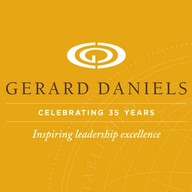Equity, diversity and inclusion (ED&I) is a strong and growing focus for the Australian mining sector, and there has been some progress on this front:
- Diversity of talent targets have been set
- Independent inquiries have been commissioned into workplace sexual harassment
- ParityPledges® have been made in commitment to gender and racial equality
- And the 4th Annual Women in Mining and Resources Summit will soon kick off in Perth, aimed at strengthening and diversifying the talent pipeline.
But while these and other initiatives are underway, there is little evidence that sustainable industry-wide change has been achieved. Instead, diversity advocates like Barry Bloch, (Global Partner for Board and Executive Leadership) and Daryna Chorna (Partner), argue that this change needs to be much faster and more substantial.
Here we consider why we need diversity in mining; where this sector is falling short; and what stands in the way of progress.
Why do we need diversity?
“Aside from being a fundamental human right, it has long been recognised that diversity of all kinds leads to better financial performance, enhanced decision making, greater creativity and innovation, and improved access to talent,” says Barry. “
How far has the diversity agenda come?
At the current rate of change, the 2022 World Economic Forum predicts that it would take 132 years to close the global gender gap, and the mining sector is not yet seen to be leading the way.
“We have not been short of actions to address inequalities in terms of ED&I, but the resources sector and wider economy is still glacially slow to move forward,” says Barry. “So while some positive change has happened, it has not been nearly fast or significant enough.”
Daryna has also seen some improvement around diversity, but acknowledges it isn’t enough. “Progress on ED&I has been slow and inconsistent across the sector,” she explains. “While some organisations are pioneering change, others are catching up, and some are yet to address this issue at all. To move forward we must be prepared to acknowledge how far we still have to go.”
Gender equality: The state of play
- In the Australian mining sector women are significantly underrepresented at all levels. In June 2021, mining (including oil and gas) remained the country’s least diverse industry, with a female participation rate of 19.1%. Globally, women account for just 11.1% of C-suite positions in mining and metals.
- With a salary gap that’s growing instead of shrinking, there’s little incentive for women to want to workin mining. The November 2021 Workplace Gender Equality Agency reports that in the 12 months prior, the mining gender pay gap grew from 14.8 per cent, to 15.4 per cent.
- Furthermore, the culture and environment for women working in mining isn’t always safe and inclusive. A recent inquiry into sexual harassment against women in the FIFO mining industry revealed that 74 per cent of mining workers who report workplace sexual harassment are women.
What stands in the way of change?
Underestimating the strategic importance of diversity
To achieve significant change we must approach diversity not just as a societal obligation, brand or compliance issue, but as a strategic enabler.“ When governance drives diversity, or it is fuelled by the perception of doing the right thing, we get overt compliance, covert resistance, and this is a situation that rarely leads to real transformation,” says Barry.
“We need the right diversity drivers to move beyond this mindset, which requires a fundamental shift in thinking, language, behaviour and decision making,” he continues. ”The most successful organisations in terms of performance achieve this by going beyond policy, process, procedure, systems, to position diversity as a strategic business need.”
The need for cultural change
As well as positioning diversity as a strategic enabler, Daryna argues that it must form part of broader cultural transformation in the mining sector.“ For leaders to have inclusive mindsets, this transformation must be based on developing cultural awareness, emotional intelligence, collaboration and empowerment of women,” says Daryna. “Driving diversity through cultural change will lead to more authentic and sustainable workplaces experiences. It will also aid in the attraction, retention and promotion of diverse candidates to serve as mentors and role models, both within their organisations and the wider mining community.”
Systemic bias
While there is no silver bullet to achieve diversity, addressing the systemic bias that perpetuates this issue is a good place to start. “Our systems must support a diverse workforce and foster diverse leaders,” says Barry. “This means redesigning all of the processes by which we recruit, select, remunerate, retain and develop talent.”
“The good news for mining and all other sectors is that there is a strong appetite for change. And for many of the clients that we are dealing with at Board and Executive level, there is no shortage of diverse talent.” Barry concludes. “We also know from successfully transforming the culture around safety in mining, that significant change can happen if we want it badly enough, and if we are prepared to invest accordingly.”
For advice on attracting, retaining and developing your diverse mining workforce, reach out to your local Gerard Daniels team.







